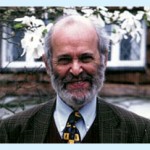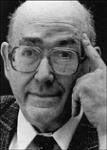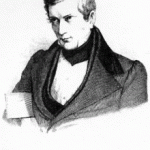Did Jesus Rise from the Dead?
January 22, 2013
Did Jesus Rise from the dead?
1 Introduction
The claim that Jesus rose from the dead is the most critical of all Christian truth claims. As Paul states, if Christ is not raised then your faith is futile. In other words, Christianity stands or falls on the basis of the reality and truth of a physical resurrection of Jesus of Nazareth. This article is a summary of William Lane Craig’s argument for the resurrection, based on chapter 9 of his book, On Guard, Defending your faith with Reason and Precision.
The argument is presented in 2 phases:
- What is the evidence, and
- What is the best explanation of the evidence?
This argument is mainly based on the writings of the New Testament, in particular the 4 gospels, Acts and those letters of Paul that are universally recognized as genuinely from the hand of Paul. This includes Galatians, 1&2 Corinthians, Romans, Philippians and Colossians. The argument does not assume that the NT texts are the divinely inspired Word of God. It treats them as historical resources that are the works of men. They are a set of fairly independent books that were eventually formed into a collection, which we now call the New Testament.
2 The Evidence
The 3 lines of evidence are:
- The empty tomb,
- Jesus’ appearances alive after his death, and
- The origin of the disciples’ belief in Jesus’ resurrection.
2.1 The Empty Tomb
The 5 lines of evidence for the empty tomb are:
- The evidence for Jesus’ burial
- There are multiple independent reports of the empty tomb
- The simplicity of Mark’s account
- The role of women in the discovery of the empty tomb, and
- The earliest Jewish response to the resurrection claim
2.1.1 Burial
Why is the burial relevant to the argument for the empty tomb? If the burial story is accurate then the location of the tomb was known. The tomb must have been empty when the disciples commenced preaching, otherwise the disciples wouldn’t have believed their own message, nobody else would have believed them, and the Jewish authorities would have suppressed the new movement by exhuming the body.
The evidence for the historicity of the burial is that
- We have multiple independent sources supporting the burial and also
- The particular role of Joseph of Arimathea.
2.1.1.1 Independent Sources
There are at least 5 independent sources that support or provide information about the burial:
- Mark’s passion source,
- Paul in 1 Corinthians 15:3-8,
- Matthew and Luke’s source,
- Early sermons in Acts, and
- John.
Mark’s passion source is believed to be derived from an earlier source as it differs in style from the rest of Mark. It is one long continuous narrative, whereas the rest of Mark tends to consist of short pericopes with abrupt joining statements. Mark describes the burial by Joseph of Arimathea and that Mary Magdalene and Mary the mother of Joses witnessed where Jesus was buried. In 1 Corinthians 15 Paul explicitly states that Jesus died, was buried and was then raised on the 3rd day. Matthew and Luke deviate from Mark in a common way, indicating that they were using a common source independent of Mark, usually assumed to be Q, which is an early source. John’s source is also independent. Acts contains records of early sermons that mention the burial, as “he was not abandoned to the grave” (Acts 2:31).
2.1.1.2 Joseph of Arimathea
All 4 gospels state that Joseph of Arimathea buried Jesus in his family tomb. Joseph was a member of the Jewish Sanhedrin. There was tension and hostility between the Sanhedrin and Jesus, as well as with his disciples. However, the gospels speak favorably about Joseph. Thus this is unlikely to be a Christian invention. The gospels also state that women were the witnesses to his burial, which is also unlikely to be a Christian invention.
2.1.2 Independent Reports of the empty Tomb
The independent sources that directly attest the empty tomb on Sunday morning include those sources that attested the burial. Matthew also reports that the first Jewish counterclaim to the resurrection was that the disciples had stolen the body. However, this claim would only have been raised if the tomb was actually empty. Luke and John also mention that 2 of the disciples visited the tomb to verify the women’s report that the tomb was empty. These constitute additional independent sources that attest the empty tomb.
2.1.3 Simplicity of Mark’s Account
Mark’s account of the empty tomb is simple and lacks legendary development that is typical of later legends. The actual resurrection is neither witnessed nor described. The narrative is told simply without theological reflections or Old Testament quotations. This is in contrast to the gospel of Peter, which is typical of late legendary developments.
2.1.4 Role of Women
All 4 gospels attest that it was women who discovered the empty tomb. This likely to be genuine as it is something that would not be invented. This is due to the low status of women within Jewish and Greek culture at that time. Women were not regarded as credible witnesses. For example, in Antiquities of the Jews IV.8.15, Josephus states, “Let not the testimony of women be admitted, on account of the levity and boldness of their sex”. Other quotations that indicate the low status of women at that time are, “Sooner let the words of the Law be burnt than delivered to women” (Sotah 19a) or “Blessed are you, Lord our God, ruler of the universe, who has not created me a Gentile, a slave or a woman” (Berachos 16b).
2.1.5 Earliest Jewish Response
The earliest response to the resurrection was that the disciples had stolen the body (Matt 28:11-15) and Matthew states that “The story has been spread among Jews to this day”. This presupposes that the body was missing.
2.1.6 Conclusion on Empty Tomb
The historical evidence for the empty tomb is quite strong and is now widely supported by Biblical scholars and historians. Jacob Kremer (a New Testament critic) states that “By far most scholars hold firmly to the reliability of the biblical statements about the empty tomb”. Gary Habermas has conducted a study and claims that 75% of scholars accept the empty tomb (Habermas). This includes eminent Jewish scholars, such as Geza Vermes and Pinchas Lapide.
2.2 The Appearances
I will now discuss the evidence for the appearances of Christ after his death. Three lines of evidence will be presented:
- Paul’s list of eyewitnesses
- Independent gospel accounts, and
- The bodily nature of the appearances.
2.2.1 Paul’s List
In 1 Corinthians 15: 3-8, Paul provides a list of people to whom Christ appeared after his death:
For what I received I passed on to you as of first importance: that Christ died for our sins according to the Scriptures, that he was buried, that he was raised on the third day according to the Scriptures, and that he appeared to Peter, and then to the Twelve. After that, he appeared to more than five hundred of the brothers at the same time, most of whom are still living, though some have fallen asleep. Then he appeared to James, then to all the apostles, and last of all he appeared to me also, as to one abnormally born.
This quotation is from one of Paul’s indisputably authentic letters. From Galatians, we know that Paul was acquainted with the first disciples and it is strongly believed that this account was obtained from Peter and James while he stayed with Peter for 15 days, three years after his conversion. His list includes the following people:
- Peter
- Twelve
- Five hundred brethren
- James
- All the apostles
- Saul of Tarsus (Paul)
2.2.1.1 Peter
The specific appearance to Peter is not described in any of the gospel accounts. However, we have good evidence that it did occur for 2 reasons:
- Paul knew Peter personally (Galatians 1:18) and so he received this information first hand, and
- Although Luke does not describe the appearance, he still mentions that it occurred, as he reports “The Lord has risen indeed and he has appeared to Simon [another name for Peter]” (Luke 24:23).
Thus we have 2 independent reports that Jesus appeared to Peter.
2.2.1.2 Twelve
“The Twelve” is a generic term that refers to the original 12 disciples minus Judas. The appearance to this group of disciples is also independently described in Luke 24:36-42 and John 20:19-20. In both accounts Jesus greets the disciples with “Peace be with you” and then he shows them his wounds before eating in their presence. This appearance emphasises the bodily, physical nature of the appearance and also verifies that it was the same person as who was crucified.
2.2.1.3 Five hundred brethren
Paul then states that Jesus appeared to more than 500 brethren on a single occasion. This event seems quite outstanding, but it is not mentioned explicitly in any of the gospels. This has made many suspicious. However, in its favour, Paul states that some of these have since died but the rest are still alive. It seems apparent that Paul had personal contact with many of these people and that witnesses were still available at that time and could be questioned. Why is this event not described in the gospels? Perhaps it is because most of the gospel appearances took place in Jerusalem. The appearance to the 500 could have taken place in Galilee and may even correspond to the event described Matthew 28:16-18 (the great commission).
2.2.1.4 James
James was one of Jesus’ brothers. During his ministry, his brothers did not believe in him and there was obviously tension within Jesus’ family. This is reported independently in Mark 3:21, Mark 3:31-35 and John 7:3-5 and also meets the criteria of embarrassment. However, after the crucifixion, his brothers had changed their attitude. They were present with the disciples in the upper room (Acts 1:14), James became the leader of the Jerusalem church, Paul met with James during his 15-day stay with Peter and Paul refers to James as one of the 3 pillars of the church at Jerusalem (Galatians 2:9). In addition, all of Jesus’ brothers became Christian preachers and even Josephus describes the martyrdom of James the brother of Jesus in Antiquities of the Jews (20:200). This turnaround in the attitude of James and his brothers affirms Paul’s claim that Jesus appeared to James.
2.2.1.5 All the apostles
“All the Apostles” refers to a wider group than the original 12 disciples. It is evident that such a group existed as Luke reports, “Choose one of the men who have been with us the whole time the Lord went in and out among us, beginning from John’s baptism to the time when Jesus was taken up from us. For one of these must become a witness with us to his resurrection” (Acts 1:21-22). Thus Luke independently attests that there was a wider group of men who had witnessed appearances.
2.2.1.6 Saul of Tarsus (Paul)
The appearance to Paul is explicitly described once in Acts, and then recounted by Paul twice in the same book. Paul also explicitly confirms this appearance in 1 Corinthians 9:1and 15:8. Saul was previously a Pharisee, a persecutor of Christians and even responsible for the execution of some Christians. This is described in Acts and is also confirmed in his letters. However, he suddenly gave up his former way of life to follow Jesus, for which he suffered greatly and was eventually martyred. This radical change was solely based on his belief that Jesus had appeared to him.
2.2.2 Independent Gospel Accounts
The gospels and Paul’s list provide multiple independent accounts of appearances:
- The appearance to Peter is mentioned by Paul (1 Cor 15:5) and Luke (24:34)
- The appearance to the 12 is mentioned by Paul (1 Cor 15:5), Luke (24:36-53) and John (20:19-31)
- The appearance to the women is reported by Matthew (28:9-10) and John (20:11-17) and also meets the criterion of embarrassment
- The appearance to the disciples in Galilee is reported by Matthew (28:16-20), Mark (16) & John (21)
According to sceptical scholar Gert Ludemann, it is historically certain that disciples experienced appearances.
2.2.3 Bodily Nature of the Appearances
However, were the appearances physical and bodily or were they simply visions that were internal to peoples’ minds? On this the New Testament is clear for the following reasons:
- Paul implies that the appearances were physical,
- The NT distinguishes between appearances and visions, and
- The gospel accounts emphasis that the appearances were physical.
2.2.3.1 Paul on the Resurrection Body
Paul taught not only the immortality of the soul, but even more emphatically taught the resurrection of the body. In 1 Corinthians 15:42-44 Paul compares the earthly body with the resurrection body as shown in the following table:
| Earthly Body | Resurrection Body |
| Mortal | Immortal |
| Dishonorable | Glorious |
| Weak | Powerful |
| Natural | Spiritual |
Some have suggested that the natural/spiritual comparison is synonymous with physical/immaterial. However, this is not the case. Paul makes it clear that he is referring to orientation. The natural man seeks to please the desires of the flesh whereas the spiritual man seeks to please God.
2.2.3.2 Appearance/Vision Distinction
The New Testament clearly distinguishes between an appearance and a vision. An appearance is external and physical whereas a vision only occurs within an individual’s mind. The appearances occurred over a period of 40 days. Thereafter, individuals experienced visions, such as Stephen’s vision of Jesus at the right hand of God while he was being stoned (Acts 7). The exception was Saul, who experienced an appearance much later. There was a flash of light, he fell to the ground, he was temporarily blinded by the experience and his acquaintances heard a sound but did not understand the voice. Also Paul explicitly describes this event as an appearance.
2.2.3.3 Gospel Accounts Emphasize Physical Appearances
All of the gospel accounts emphasize the physical nature of all of the appearances. There is no trace or evidence on non-physical appearances. These accounts also meet the criterion of dissimilarity. The Greeks only believed in the immortality of the soul and considered the physical body inherently evil. The Jews believed in the universal resurrection of the righteous at the end of the world but had no belief in the resurrection of an individual prior to this time, let alone that the Messiah would be resurrected.
2.3 Disciples’ Belief
So far we have covered evidence for the empty tomb and the post crucifixion appearances. The 3rd line of evidence is the origin of the disciples’ belief in the resurrection. The Christian Church exploded into life during the 1st century. What caused this movement to begin? The crucifixion was a disaster for the common expectation of the Messiah. The origin of the Christian Church was based on their belief that God had raised Jesus from the dead and that the resurrection was the validation of Jesus’ claim to be Messiah.
3 The Best Explanation
The evidence strongly suggests that Jesus died and was buried, but on the following Sunday morning his tomb was empty. This was then followed by what witnesses believed to be physical appearances of the risen Jesus. It was this belief in the physical resurrection that was the basis for the origin of the Christian church. This is the evidence that is widely accepted by Biblical critics. However, how is this evidence best explained? This section will describe some of the criteria that historians use to formally compare hypotheses in the light of the evidence and will then apply these criteria to compare the following hypotheses:
- The Conspiracy Theory,
- The Apparent death Theory,
- The displaced body theory,
- The hallucination Theory, and
- The Resurrection hypothesis.
3.1 Criteria for Comparing Hypotheses
Historians use various criteria for comparing hypotheses. These include the following:
- Explanatory scope: How well does the hypothesis explain the evidence?
- Explanatory power: Does this hypothesis make the evidence more probable?
- Plausibility: How well does this hypothesis fit with background beliefs?
- Less contrived: Is there less need for additional unsupported beliefs?
- Disconfirmed by fewer expected beliefs: Does this hypotheses not conflict with fewer accepted beliefs?
- Meets conditions 1-5 better than other hypotheses
3.2 Hypotheses Comparison
3.2.1 Conspiracy Hypothesis
The conspiracy hypothesis is that the disciples stole the body and then lied about his appearances.
This theory has good explanatory scope as it explains all of the evidence. The tomb was empty since the disciples stole the body. It explains the appearances, as the disciples lied. It also explains the origin of the disciples’ belief as that was also a lie. However, this hypothesis does not have good explanatory power. Why invent a story where the empty tomb is discovered by women? Why is the story not filled with proof texts and fulfilled prophecies? Why isn’t the resurrection witnessed and described? There are no dazzling and glorious appearances. Matthew’s story about the guard would not suit a conspiracy. The body could already have been stolen before the guard was set. However the biggest objection is that, “Why would the disciples die for something they know isn’t true?”
The conspiracy theory is also implausible. Conspiracies are difficult to maintain and usually unravel. It also doesn’t tally with the disciples’ psychological state. They would have been devastated that their hoped for Messiah had been humiliated by crucifixion. Why would they bother with constructing a conspiracy?
In the early 20th century it was fashionable for scholars to suggest that Christian beliefs about the resurrection were contrived by copying pagan resurrection stories. Scholars collected supposed parallel stories from pagan religions. However the movement collapsed when the parallels were studied more deeply. The reasons were that the parallels were shown to be false and there was no connection with the disciples’ resurrection belief.
The ancient world was a fruit basket of beliefs and so it was easy to find instances that were similar. However, the parallels were of a different order. Some were assumptions into heaven (Hercules or Romulus), some were disappearances (Apollonius and Empedocles), some were seasonal symbols (Tammuz, Osiris and Adonis) and some were emperor worship (Julius Caesar and Augustus Caesar). However, none of them were a close match to the resurrection and were simply the wrong interpretive framework for 1st century Jews. In addition, paganism was abhorrent to Jews and so it is highly unlikely that the disciples would have derived the resurrection from pagan beliefs.
As an alternative some have suggested that the resurrection was derived from Jewish influences. However, the Jews expected the resurrection of all the righteous at the end of the world. They did not expect the resurrection of an individual Messiah prior to the end. This has been confirmed from other messianic movements. No other Messianic movement ever proposed that their Messiah was resurrected.
The conspiracy theory is also contrived. It postulates motives to the disciples for which there is no evidence. It suggests that the moral character of the disciples was defective. Hypotheses have to be multiplied to account for the evidence. How does the conspiracy hypothesis account for the 500 witnesses and the women discovering the empty tomb?
The conspiracy theory is also disconfirmed by expected beliefs. Conspiracies tend to unravel. The disciples also seem sincere and the story does not match messianic expectations. For these reasons the conspiracy theory is not taken seriously by any scholar today.
3.2.2 Apparent Death Hypothesis
This theory suggests that Jesus was not dead when he was taken down from the cross. He later revived and escaped from the tomb, and then convinced the disciples that he had risen. This theory was popular at beginning of 19th century. This theory would explain the empty tomb, the appearances and the origin of the disciples’ belief. Some versions of this theory suggest that the disciples and Jesus conspired to fake Jesus’ death. However this version suffers from the same weaknesses as the conspiracy theory. The other version of this theory is that Jesus just happened to survive. However there are some obvious problems with this version. Jesus underwent severe torture prior to the crucifixion making it highly unlikely that he could survive crucifixion. The guards thought that Jesus was dead and they should have been competent in their assessment. Roman soldiers knew when their victims were dead and could ensure death by a spear thrust. Surely Jesus was at least severely weakened. How could he then move the stone, impress his disciples or support numerous appearances? The theory is also contrived. There have been suggestions that Jesus took special potions to fake death or that the centurion’s lance thrust was just a superficial poke. The theory is also disconfirmed by medical knowledge regarding the effects of scourging and crucifixion. Also, the appearances only continued for 40 days but Jesus did not continue with the disciples thereafter. Hence the displaced body hypothesis now has little scholarly support.
3.2.3 Displaced Body Hypothesis
This theory suggests that Joseph of Arimathea only placed the body in his tomb temporarily and then later moved the body into the criminal graveyard. Hence the disciples discovered the empty tomb and then inferred the resurrection.
This theory explains the empty tomb but not the appearances. It also has little explanatory power. Why didn’t Joseph correct the mistake? Perhaps he died before he got the chance. Some have suggested that the body was unidentifiable. However, Jewish ossuary practices militate against this. After one year the bones were transferred into an ossuary box and so Jews knew how to identify the correct body. Besides this, the criminals’ graveyard was close by. There would have been no need to use the family tomb. In addition, the Jewish law did not permit the body to be moved so soon after death. The theory is also contrived by suggesting Joseph’s sudden death or ascribing motives to him for which we have no evidence. Thus no historian currently supports this theory.
3.2.4 Hallucination Hypothesis
David Strauss proposed the hallucination theory in his book, The Life of Jesus Critically Examined (1835). The most prominent defender of this view today is Gerd Ludemann. This theory suggests that the appearances were hallucinations. This theory explains the appearances but does not explain the empty tomb and does not actually explain the disciples’ belief in the resurrection.
One of the claims is that the recorded appearances are similar to modern experiences of visions of the departed. Even if this is so, this would not lead to a resurrection belief. Visions of the departed may encourage belief in an afterlife but do not cause belief in a current physical resurrection. Visions of the departed are not taken as evidence that someone is alive, but that they are dead. Visions or hallucinations would more likely lead to a belief that Jesus was assumed into heaven in a manner like Enoch or Elijah.
It has been suggested that Peter and Paul could have had guilt induced visions but this theory relies on disputed theories proposed by Jung and Freud. Besides this, Paul does not fit. He was a successful and happy Jew who was fulfilled in his former manner of life. Paul’s experience is also recorded as being specifically an external appearance. His heard a voice, he was knocked to the ground and he became temporarily blind. The diversity of the appearances also “bursts the bounds of psychological casebooks.” Jesus appeared to many people at many times in many locations and under many circumstances. How could all these appearances lead to a uniform view of a physical resurrection? Some have suggested that there was a chain reaction and copy cat behavior amongst the disciples, but Paul and James also experienced appearances and they were not members of that group.
The hallucination theory is also highly contrived. It assumes that Peter was so obsessed with his guilt that he projected a hallucination. It also requires that the other disciples were prone to hallucinate or that Paul had a secret attraction to Christianity. The theory is also disconfirmed by the empty tomb, Paul’s satisfaction with his former life and the clear distinction that the New Testament makes between an appearance and a vision.
Nevertheless, the hallucination hypothesis is still considered a live option today and is superior to the other naturalistic options, but how does it compare with the resurrection hypothesis?
3.2.5 Actual Resurrection Hypothesis
The resurrection hypothesis is that Jesus actually physically rose from the dead leaving behind an empty tomb. This theory explains all 3 facts of the empty tomb, the appearances and the disciples’ belief in the resurrection. It also has great explanatory power since if Jesus rose from the dead we would expect the empty tomb, the appearances and the disciples’ belief. It is also more plausible considering Jesus’ life, his claims about his identity and the evidence for God’s existence. The resurrection claim is more plausible for Jesus than for Elvis. The main supposition that is required is that God exists. Once this is admitted as a genuine possibility then a supernatural explanation fits into the historical context. The main disconfirming belief is that “dead men do not rise”. It is indeed true that dead men do not rise naturally. However, the claim is that God raised Jesus from the dead. Hence if the prejudice against miracles is rejected, then there is no better rival to the resurrection hypothesis.
4 Conclusion
There is good evidence for the empty tomb, the appearances and that the disciples believed in the resurrection. The most straightforward explanation is that Jesus did indeed rise from the dead as claimed. The main obstacle to accepting this as true is the prejudice against the supernatural and against miracles. If God does not exist then the resurrection is impossible. However, if God is the creator and designer of the universe then, “the odd resurrection here and there is chicken feed”.





